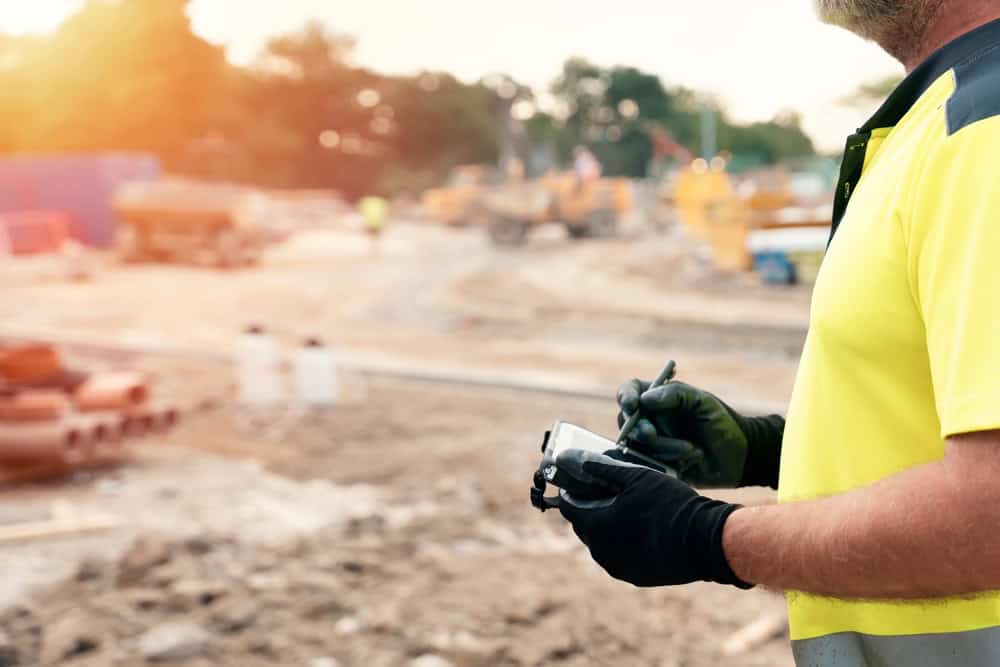Summary:
Why Older Properties Need More Frequent Surveys
In Florida, there may be land records with surveys that are outdated and not as accurate as those done today with technological advances like CAD or GPS. The land’s markers may have moved or traveled over time, as well. This reality makes older properties particularly vulnerable to boundary confusion.
Research from the Florida Bar Association indicates that the state has seen a shift towards modern land surveying methods in recent years, but many older properties still rely on traditional methods. If your property survey is more than 15-20 years old, you’re likely dealing with less precise measurements that could cause problems down the road.
The issue isn’t just about technology. The land’s markers may have moved or traveled over time, as well. We identify any discrepancies between the recorded instruments and the ground itself. Physical markers deteriorate, get removed during construction, or shift due to natural causes, making your old survey potentially unreliable.
How Survey Technology Has Changed Over the Decades
The difference between older surveying methods and today’s technology is dramatic. The first official survey of Florida was performed around 1824. Even surveys from the 1990s and early 2000s used methods that pale in comparison to current GPS and 3D laser scanning capabilities.
Modern surveying equipment can achieve accuracy within inches, while older methods might have margins of error measured in feet. This precision gap becomes critical when you’re dealing with property improvements, fence installations, or construction projects where exact boundaries matter.
We also use the assistance of GPS, Computer-Aided Drafting (CAD) and Robotic Survey Systems (RSS). These technologies weren’t available or widely used in earlier decades, meaning your older survey might be based on less reliable measurement techniques.
For property owners in Martin County, Okeechobee County, and Indian River County, this technological evolution is particularly relevant. Florida’s unique environmental challenges, including shifting soils and hurricane damage, can affect property markers over time. Modern surveying methods account for these factors in ways that older surveys simply couldn’t.
The legal implications are significant too. Resolving this conflict typically involves hiring a new, independent surveyor to conduct a modern analysis. If an agreement still cannot be reached, it may require a legal agreement or court action to establish the official boundary line. Having an updated survey using current technology strengthens your position if disputes arise.
Signs Your Older Property Needs a New Survey
Several red flags indicate it’s time for an updated property survey, regardless of when your last one was completed. Discovering years later that your fence encroaches on your neighbor’s land or falls short of the designated boundaries is a scenario all too familiar. Don’t wait until you’re in this situation.
Physical changes to your property or neighboring properties are major indicators. If you’ve added structures, pools, driveways, or fences since your last survey, you need current documentation. The same applies if your neighbors have made improvements that seem close to property lines.
If any changes have been made to the property since the survey provided was done (pool, deck, fence, etc.) then it will not be accepted. This applies to both your improvements and those of previous owners that might not be reflected in older surveys.
Disagreements with neighbors about property lines, even minor ones, signal the need for professional clarification. Property owners can spend years assuming boundary lines are in one place, when in actuality the legal description determines their boundaries in a different location. These assumptions often prove costly when formalized disputes arise.
Missing or damaged property markers are another clear sign. If you can’t locate the iron rods or stakes that marked your corners during the original survey, those boundaries need professional reestablishment. Weather, construction, and landscaping activities commonly disturb these crucial reference points.
Planning any construction or major landscaping project requires current survey information. Building permits, fence installations, and pool construction all depend on accurate boundary information. Using outdated surveys for these projects can result in violations, forced removals, or legal complications with neighbors.
How Often Should You Survey Your Property
Every state is different with the amount of time that a surveyor will guarantee their documentation of your property. We will still be liable for the accuracy of a survey for five to ten years. This liability period gives you a baseline for survey frequency, but practical considerations often require more frequent updates.
For most older properties, a comprehensive survey every 10-15 years provides adequate protection against boundary disputes and legal complications. However, this timeline accelerates based on specific circumstances affecting your property or the surrounding area.
Properties with active development nearby need more frequent attention. New construction, road improvements, or utility installations in your area can affect property markers and boundaries, making your existing survey less reliable even if it’s relatively recent.

Factors That Accelerate Survey Needs
Several factors can make your property survey obsolete faster than the typical 10-15 year timeline. Understanding these accelerators helps you stay ahead of potential problems and protects your investment.
Neighborhood development activity tops this list. When new homes, commercial buildings, or infrastructure projects appear near your property, they can disturb existing markers or reveal discrepancies in older surveys. We’ve seen cases where buyers purchased 50 acres, but discovered later the fences on the land are all off by about 98 feet. This kind of discovery often happens when development activity brings increased scrutiny to property boundaries.
Natural disasters and severe weather events common in Florida can shift or destroy property markers. Hurricane damage, flooding, and even significant storms can affect the physical references your survey depends on. After major weather events, it’s wise to have your property markers verified, especially if you plan any construction or improvements.
Changes in ownership of neighboring properties often reveal boundary issues that weren’t apparent before. New neighbors might have different ideas about property lines, or they might commission their own surveys that conflict with yours. They may possess their own past land surveys, contributing valuable information to your decision-making process and helping address any disparities in documentation. Mutual cooperation can be especially beneficial if your neighbors are also contemplating fence installations, prompting them to conduct their boundary surveys.
Legal or regulatory changes can also affect your survey needs. Updates to local zoning laws, setback requirements, or environmental regulations might make your older survey inadequate for current compliance needs. Martin County, Okeechobee County, and Indian River County periodically update their land use regulations, potentially affecting how your property can be used or developed.
Property improvements by previous owners create another complication. If you purchased your property with existing structures, pools, or other improvements, your older survey might not accurately reflect these features or their compliance with current regulations. Our survey will also reveal if a violation of the setback exists on the land. If so, then the issue will need to be corrected by the seller before the buyer closes on the transaction.
When Real Estate Transactions Require Updated Surveys
Real estate transactions often trigger the need for updated surveys, even if your existing survey seems adequate for daily property use. By far one of the biggest mistakes buyers make when purchasing real estate is choosing not to have a new survey completed. This applies equally to sellers who assume their old survey will suffice.
To provide this expanded coverage and remove the survey exception, the title insurer will almost always require you to get a new, certified boundary survey before you close on the property. Under Florida law, if a recent survey meeting state standards is provided to the insurer, the policy can only list exceptions. This requirement ensures all parties work with accurate, current property information.
Mortgage lenders increasingly require updated surveys, especially for older properties where previous surveys might not meet current standards. Also known as a mortgage survey, title companies typically require these to be done before issuing title insurance. Many lenders will also require an ALTA survey before they will provide financing for the mortgage. The cost of an updated survey is minimal compared to the complications that arise from using outdated information.
A new survey is not always required for a real estate transaction, particularly if no improvements have been made to the property and if sellers are selling the same piece of land that they purchased originally. If the survey still fulfills its purpose of accurately representing the property, then a new survey is probably unnecessary. However, if the land is only part of what the seller originally purchased, or if improvements have been made to the property since the last survey, the title company may require a new survey.
The decision often comes down to risk tolerance and the specific circumstances of your transaction. For older properties with any modifications since the last survey, the safer approach involves getting updated documentation. This protects both buyers and sellers from post-closing disputes and ensures smooth transaction completion.
Title insurance considerations add another layer of complexity. Critically, a key feature of many enhanced policies is the removal of the standard survey exception, thereby providing coverage for certain boundary and encroachment issues. Enhanced coverage often requires current survey information, making updated surveys valuable for comprehensive property protection.
Making Smart Survey Decisions for Your Property
The question isn’t really whether you need an updated survey for your older property, but when and how often. First, only a survey will determine with any degree of certainty what is being purchased. Second, if the buyer decides not to obtain a survey, they need to be prepared to “own” that decision and its consequences. This wisdom applies equally to current property owners managing older properties.
Smart property owners in Martin County, Okeechobee County, and Indian River County treat surveys as insurance against future problems rather than just paperwork requirements. A survey every 10-15 years, or more frequently when circumstances warrant, protects your investment and provides peace of mind.
The cost of an updated survey pales in comparison to the potential expenses of boundary disputes, legal fees, or forced removal of improvements built in the wrong location. When you’re ready to protect your property with accurate, modern surveying services, Aero Land Surveyors the expertise and technology you need for reliable results.





